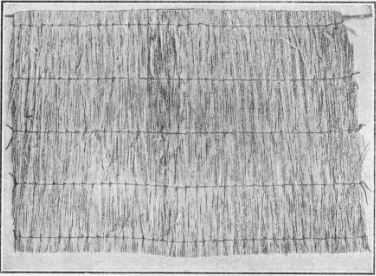212. Flats And Plant Boxes
Description
This section is from the book "Vegetable Gardening", by Ralph L. Watts. Also available from Amazon: Vegetable Gardening.
212. Flats And Plant Boxes
Flats are often used in greenhouses, and they are practically indispensable when starting plants in hotbeds and cold frames. Notwithstanding this, many gardeners do not use them extensively, for they have not learned their advantages, which may be enumerated as follows: (i) They make it possible to do all the work of seed sowing and transplanting in warm, comfortable rooms provided with tables or benches of convenient height. Because of these comforts and conveniences, more work can be accomplished in a day, especially if the weather is cold or disagreeable, and it will be done better than when the worker must stoop over frames. (2) Sowing or transplanting may be continued whatever the character of the weather. When transplanting in severe weather, the box of plants should be protected by a cloth or a box when carried to the work room. So should the plat of transplanted seedlings when taken to the cold frame. (3) Many growers claim that they can grow better plants in flats, because moisture conditions are more perfectly controlled. (4) Each flat contains a uniform number of plants, and this is a great advantage when making sales. (5) In shipping, the flats of plants may be crated, if this is desired, and they will reach their destination in perfect condition. (6) When planting in the field the flats may be hauled and distributed over the field at convenient intervals. (7) The plants may be pulled with a large amount of soil, as shown in Figure 38. Some gardeners go to the trouble of cutting out each plant with a block of soil or of compost.
Flats may be made from soap boxes or other boxes of convenient size. This is doubtless the most economical plan, but there are objections to it. The lumber in a miscellaneous lot of boxes is variable in quality and durability, and the flats are not uniform in size. Because of varying dimensions they cannot be placed in the frames without loss of space. When this annual loss is taken into account, it makes a strong argument for a uniform size of flats. When new lumber is used, the flats should be made to fit in the frames or on the greenhouse bench without loss of space. Chestnut is a durable wood for this purpose. The sides and bottoms should be made of 1/2 -inch and the ends of 3/4 -inch pieces. When nailing on the bottom pieces, about 1/4 -inch cracks should be left between them, to provide good drainage. Two inches is ample depth for most purposes. A deeper flat requires more soil and makes handling heavier. If the flats are about 2 1/2 x 16 x 22 1/2 inches, outside dimensions, three of them will fit in a 6-foot frame without an appreciable loss of space. Flats of smaller size are convenient for the retail plant business.

Fig. 40. rye-straw mat.
Continue to:
Tags
plants, crops, gardening, cultivated, harvesting, food ,greenhouses, fertiliser, vegitables
